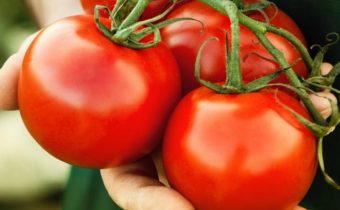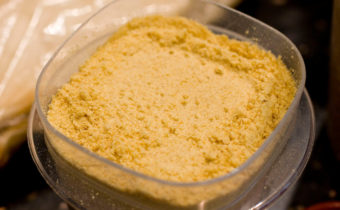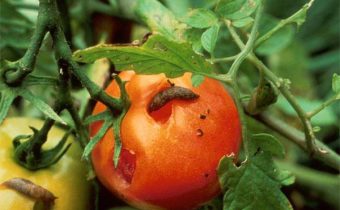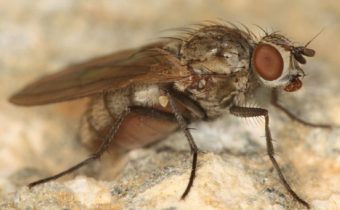Spots appeared on the leaves of tomatoes, how to treat kladosporiosis?
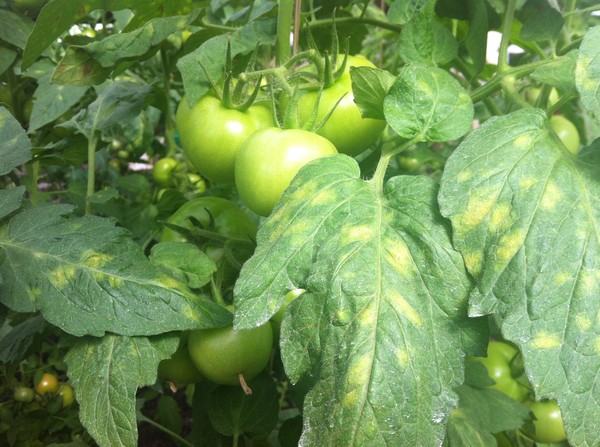
Features of the disease
The name of the disease may not be known to everyone, as people often call it brown spot. This very clearly characterizes the disease. The fact is that seedlings begin to become covered with brown spots, they gradually grow, and the seedlings die, and together with it the harvest. The disease is insidious, dangerous, it can even stay on dry leaves and survive the winter. And when you decide to plow the garden together with the remnants that are often used as fertilizer, you will soon get sick crops. Therefore, the tops need only burn and further from the garden.
See also: Feeding tomatoes during flowering and fruit set
For information!
It is noteworthy that most often suffer from the ailment under the name of klaosporioz of tomatoes, the treatment of which we will tell you today, tomatoes that grow indoors, on the street spotting on the leaves rarely appears.
No matter where your planting is located, the disease is dangerous, it is easily tolerated, it is caused by fungi, which are especially good in breeding heat and moisture. And as a prevention advice, never pour plantings, always loosen the soil, spray it to reduce risks and feed seedlings for immunity. Cladosporiosis most often begins to spread from the bottom of the plants. Brown spots appear on the back of the leaves, and light on the top.
Tomato treatment for spotting
You can use different methods:
- folk ways;
- chemicals;
- biological preparations.
We would, of course, advise you to first try to overcome the ailment with simple means from the people, since they are safe from the ecological side, do not require costs, and afterwards use biological products. You can apply them together, well, and if nothing helped, then chemistry.
Important!
The main thing is to start acting on time at the first signs of defeat in order to cope with the problem. Otherwise, the disease quickly infects all the tomatoes, and it is unlikely to save them.
Folk methods of struggle
- Iodine and milk.
Iodine is often used for the prevention of diseases and is quite effective. In 1/2 liter of milk diluted 15 drops of the drug. Milk is better to take warm and fresh, if possible, natural cow. After that, everything is mixed with warm water - 5 liters and used for spraying every 2-3 days.
- Potassium chloride
You can make such a solution for spraying the leaves and soil. 40 drops of iodine are dropped into a bucket of water, and potassium chloride is added - 30 grams. Watered in the morning or in the evening and the soil, and the above-ground part, until the disease recedes.
See also: Why do the leaves turn yellow in a greenhouse and how to deal with it?
- Soap
Often, gardeners use a simple soap solution for their diseases. To do this, in a bucket of warm water diluted soap. It is better to take a bar of 75% and rub it on a grater.
- Ash
Another effective and popular method, absolutely safe, drives off insects, serves as fertilizer. 300 grams of wood ash is poured with a small amount of water, well stirred and put on the stove for 10-15 minutes. Then mixed with warm water - 10 liters, watered and sprayed the garden.
- Potassium permanganate
Also a proven method by experienced summer residents, it can be alternated with ash sprays. Some crystals are dissolved in water so that the solution is pinkish, after which it is used for its intended purpose, and this also serves as prevention. The method is safe.
Chemicals
If you need something fast-acting, and that it was easy to breed, you can use the following drugs precisely from brown spot:
- "Bravo";
- NeoTech;
- Kaptan;
- "Polyhom";
- "Cineb";
- Abiga-Peak;
- “HOM”;
- "Poliram".
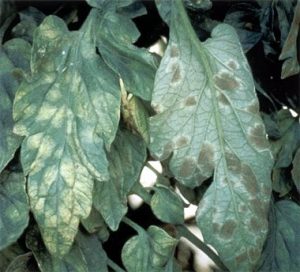 It is an effective remedy for broad-spectrum fungicides. It is worth breeding them only according to the instruction in order not to harm the plants and yourself. Two weeks after processing, it is recommended to repeat once again all the actions, as the mushrooms are very tenacious, there can still be a lot of controversy. Never abuse fungicides!
It is an effective remedy for broad-spectrum fungicides. It is worth breeding them only according to the instruction in order not to harm the plants and yourself. Two weeks after processing, it is recommended to repeat once again all the actions, as the mushrooms are very tenacious, there can still be a lot of controversy. Never abuse fungicides!
You can also apply a solution based on "Polycarbacin", copper sulfate and colloidal sulfur. They are mixed in a bucket of water at the rate of a spoon of the first and second components, and three spoons of sulfur. Treatment is needed and seedlings, and the ground - every 5-7 days.
Biological agents
These drugs are less dangerous or not dangerous, in general, they work on the surface, not sinking inside the fruit. They are washed off during watering and rains, so it is better if there are clouds in the sky, not to carry out the treatment, so that efforts are not wasted.
- "Fitolavin 300". Harmless product, diluted at the rate of 20 ml per bucket of water.
- "Strobe." It is a fungicide, but it does not harm insects, animals. It is impossible to call it absolutely safe, but still there is less harm from it than from many other chemicals. Divorced according to the instructions.
- "Fitosporin". Diluted 5 grams in a bucket of water, sprayed every other week. It is a safe, microbiological agent.
- "Pseudobacterin-2". A very good biological drug, which is now gaining popularity, fights the most common plant diseases that have become pathogens of fungi and bacteria.
So, now you know what tomato kladosporiosis is, we told you the ways of the fight and the preparations, choose what you will use.
See also:Varieties of tomatoes with photos and descriptions
The sooner you see signs of illness, the greater the chance of a positive outcome of events, so take care and attention to your plantings, moderately water, remove weeds and loosen in time.


